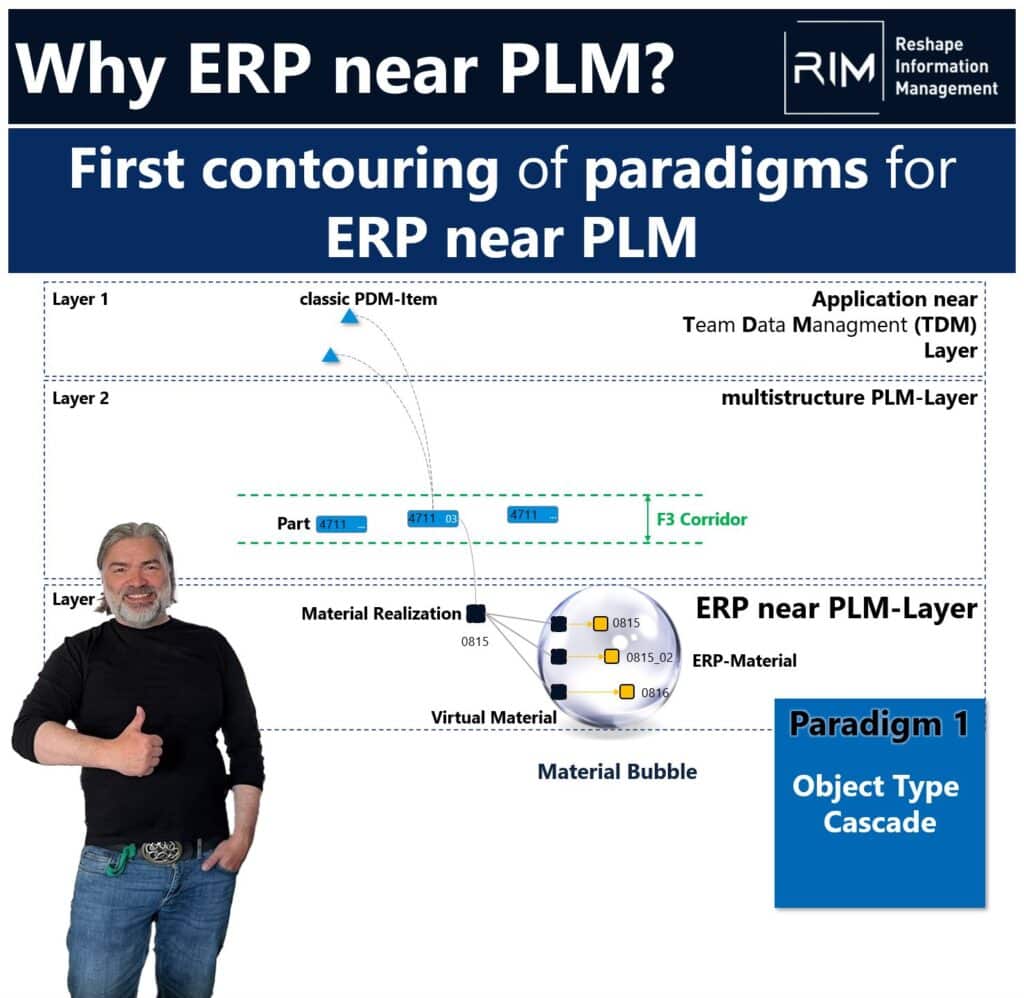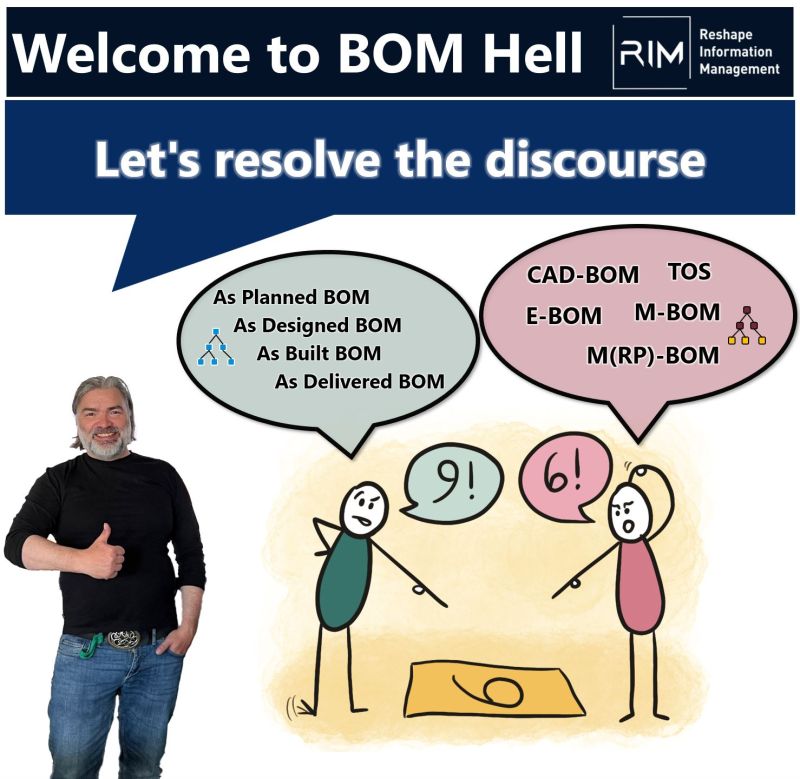The relationship of document and material
One of the most emotional discussions in PLM is the question of how document and material are related. I had considered it resolved, but I've been encountering it surprisingly often lately. Here are some key insights.
The same material number is assigned to a group of real entities if each entity from this group fulfills the same purpose. This is summarized in PLM under the terms Form-Fit-Function. If entities match in terms of form, fit and function, they are interchangeable.
A material (as a group of real entities) follows a specification and is described geometrically, among other things. Descriptions of a material are summarized under the term "documents". In short - a set of documents describe a material.
Accordingly, document and material are two separate objects!
If a set of documents describes exactly one material number, we speak of case B - 1:1. If it is permissible that a set of documents describes several material numbers, we speak of case A - 1:n. The choice between case A and case B depends on the process pattern of the PLM implementation.
However, DANGER lurks at this point!
Case B - 1:1 (two lifecycle-capable objects connected 1 to 1) is often not sufficiently distinguished from case C - 1 (one object representing document and material or two objects, but one not lifecycle-capable).
If we follow the case C - 1, we weld the lifecycles of two entities that have separate lifecycles in industrial reality.
When case C - 1 is chosen, the gate to hell often opens! This happens much more often than you think. Why?
Some old hands among solution architects represent the case C - 1 (they name this as case B - 1:1) with passion!
Many companies find it difficult to outline the case differences. They are thus helplessly at the mercy of the solution architects.
By the time we are called by the STZ-RIM, the baby is often already in the well. Adjusting the implementation after the fact is painful and expensive.
Our recommendation - do it right from the start. Case C - 1 can only be implemented in absolute special cases (strictest ETO / high vertical range of manufacture)!
What do you think? What do you think?
If you want to know what is right for your implementation case, contacts us with pleasure. Our consulting approach RIM Intention to Execute PLM takes this into account and clarifies the situation in advance.




